Birds
Media

Species Types
Scientific Name
Cathartes aura
Description
The turkey vulture is perhaps the most commonly seen soaring bird in our state. Identify this "buzzard" from below by its shallow V-angled wing posture and two-toned pattern, with the forward edge of the wings black and the trailing half gray or silvery.
Media

Species Types
Scientific Name
Corvus brachyrhynchos
Description
Crows scarcely need an introduction. A flock of them flapping over a cornfield, against an October sky, is a scene worthy of a painting, but the corn farmer doesn’t see it that way!
Media
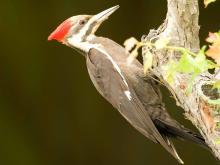
Species Types
Scientific Name
Dryocopus pileatus
Description
The large, crow-sized pileated woodpecker often attracts attention with its loud, resonant drumming high in trees. Confirm your observation by noting its black body with white markings and its red topknot.
Media

Species Types
Scientific Name
Bonasa umbellus
Description
Restoration efforts are raising the numbers of this chickenlike bird in our state. Look for brown, rufous, and gray streaks, bars, and bands. A dark ruff on the neck appears on both sexes but is used by the male in courtship displays.
Media
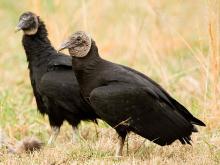
Species Types
Scientific Name
Coragyps atratus
Description
Although turkey vultures are much more common in Missouri, black vultures are expanding their range northward, and sightings of them are increasing. Note their black head, shorter tail, and (seen from below) a white patch near the ends of the wings.
Media

Species Types
Scientific Name
Meleagris gallopavo
Description
The large size, iridescent bronze plumage (which can look merely dark at a distance), and naked blue and red head distinguish this ground-dwelling bird from others in our state.
Media

Species Types
Scientific Name
Spatula clypeata (formerly Anas clypeata)
Description
Northern shovelers are dabbling ducks with remarkably long, heavy-looking bills. The male’s green head may remind you of a mallard’s, but the bill is far heavier.
Media
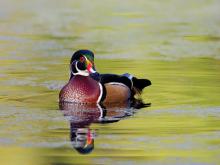
Species Types
Scientific Name
Aix sponsa
Description
The wood duck is one of the world's most beautiful waterfowl. It is equally famous for being a cavity nester in hollow trees, sometimes 60 feet above the ground and a mile away from water.
Media
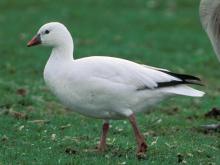
Species Types
Scientific Name
Chen rossii
Description
Ross’s goose looks a lot like the snow goose, but it is the size of a mallard, has a rounded head, stubby bill, and short neck, and lacks the black “lipstick” patch on the bill.
Media
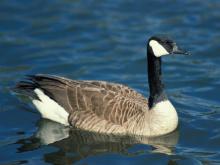
Species Types
Scientific Name
Branta canadensis
Description
Canada geese are recognizable by their brownish bodies, black necks and heads, and a distinctive broad white patch that runs beneath their heads from ear to ear.
See Also







Media

Species Types
Scientific Name
Hemaris diffinis
Description
The snowberry clearwing is a moth that confuses people because it looks like a bumblebee and flies like a hummingbird!
Media

Species Types
Scientific Name
Hyles lineata
Description
The white-lined sphinx moth sometimes confuses people because it flies, hovers, and eats from flowers like a hummingbird. The adults often fly during daylight hours as well as in the night and are often found at lights.
Media

Species Types
Scientific Name
Darapsa myron
Description
The Virginia creeper sphinx moth is common in woods and brushy areas and comes to lights at night. The larvae eat Virginia creeper and grape leaves.
Media

Species Types
Scientific Name
Perimyotis subflavus (formerly Pipistrellus subflavus)
Description
Tri-colored bats, formerly called eastern pipistrelles, are relatively small and look pale yellowish or pale reddish brown. The main hairs are dark gray at the base, broadly banded with yellowish brown, and tipped with dark brown.
Media

Species Types
Scientific Name
Myotis grisescens
Description
Gray myotises are difficult to distinguish from other mouse-eared bats. A key identifying feature of the gray myotis is that its wing is attached to the ankle and not at the base of the toes. It’s an endangered species.
Media

Species Types
Scientific Name
Myotis lucifugus
Description
The little brown myotis (little brown bat) is one of our most common bats, but populations are declining. White-nose syndrome has taken a heavy toll in northeastern states. This species is now listed as vulnerable across its range.
Media

Species Types
Scientific Name
Myotis sodalis
Description
The Indiana myotis, or Indiana bat, summers along streams and rivers in north Missouri, raising its young under the bark of certain trees. It is an endangered species.
About Birds in Missouri
About 350 species of birds are likely to be seen in Missouri, though nearly 400 have been recorded within our borders. Most people know a bird when they see one — it has feathers, wings, and a bill. Birds are warm-blooded, and most species can fly. Many migrate hundreds or thousands of miles. Birds lay hard-shelled eggs (often in a nest), and the parents care for the young. Many communicate with songs and calls.





















